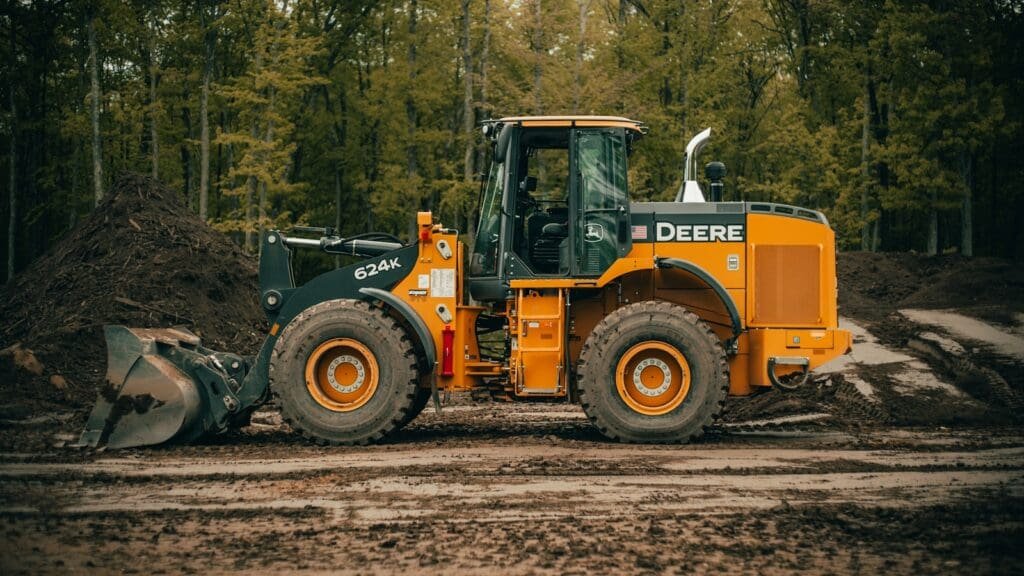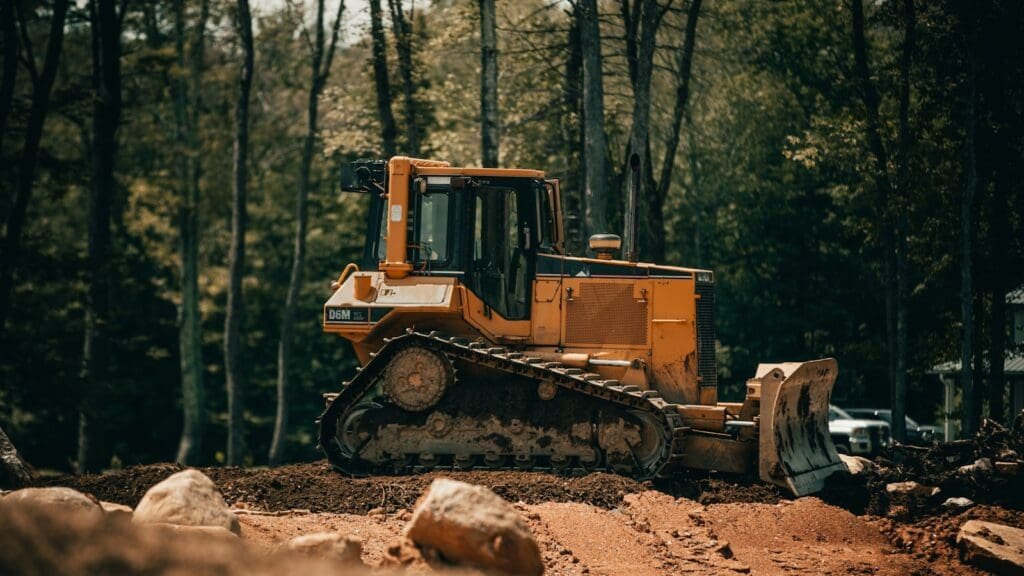Making Sense of “Cut-Fill” in Construction
I’ve been there: you stumble upon the term “cut-fill” in construction, and find yourself entangled in a web of confusion.
But don’t fret, I’m here to make it more digestible for you.
It’s time to turn this puzzling piece of construction speak into a language you can understand.
Ready? Let’s get cracking.
Table of Contents
The Straightforward Definition of “Cut-Fill”

What Does Cut-Fill Mean?
“Cut-Fill” corresponds to a fundamental principle in civil engineering and construction.
It’s all about digging soil or rock from the Earth (the ‘Cut’) and using these materials at another spot to elevate the ground surface (the ‘Fill’).
Now, you might ask: why does it matter? The answer lies in the importance of grading a construction field to lay a stable groundwork.
Cut-Fill in Construction and Best Practices to Minimize Costs
A Review of Cut-Fill Principles
Before we jump into the best practices, it’s essential to understand what cut-fill encompasses.
When the terrain of a building site is uneven, incurring slopes or depressions, the difference in levels can be problematic for construction. The solution in most cases involves the cut-fill operations.
What is a Cut?
A ‘cut’ refers to the process of excavating or removing soil from one part of a construction site.
What is a Fill?
Contrastingly, a ‘fill’ refers to the process of using the removed soil to raise the level of another part of the site. This method is commonly employed to create a flat, solid base for construction.
Best Practices to Minimize Cut-Fill Costs
1. Thorough Site-Planning
A well-planned project layout can greatly impact the cut-fill balance. Design teams should accurately map out areas for cuts and fills to maximize the use of excavated materials and reduce the need for costly soil transportation.
2. Use Technology for Surveying and Analysis
Topographic surveys with the help of advanced technology like Geographic Information Systems (GIS) and Digital Elevation Models (DEM) can efficiently calculate the cut and fill volumes necessary for a project.
Using this technology can also aid in adjusting project designs to reduce cut-fill needs.
3. Implement Sustainable Practices
Reusing or recycling leftover soil within the project not only minimizes waste but also significantly reduces costs associated with disposing of or acquiring more soil.
4. Opt for Mass Haul Diagrams
Utilizing mass haul diagrams, graphical representations that show the movement of cut and fill earth on a site, can help to balance cut-fill operations, therefore minimizing the scope of these efforts, leading to reduced costs.
Efficient cut-fill processes can play an instrumental role in controlling construction costs. By combining a thorough site-planning approach, utilizing modern surveying technologies, implementing sustainable practices, and using mass haul diagrams, construction firms can guide cut-fill operations to be cost-effective and environmentally friendly.
Understanding Cut-Fill Operations Equipment

Equipment Used in Cut-Fill Operations
A variety of heavy machinery and equipment is employed during cut-fill operations, each with specific purposes, abilities, and roles. Here are a few of the most commonly sighted tools on cut-fill construction sites:
- Excavators
- Bulldozers
- Loaders
- Dump Trucks
- Graders
- Compactors
Excavators
Arguably the most integral piece of equipment related to cut-fill operations is the excavator2. This equipment is versatile and powerful and often leads the “cut” phase of operations, responsible for digging up and removing soil.
Bulldozers
Bulldozers, equipped with their signature large metal plates (“blades”), are chiefly used to “push” the loosened soil during the “fill” phase, effectively redistributing the terrain as required.
Loaders
Loaders assist by gathering up the cut soil and loading it onto dump trucks for easy, quick transport to the fill site.
Dump Trucks
These vehicles, armed with robust, open-box beds, allow large amounts of soil to be transported from the cut area to the fill area in an efficient manner.
Graders
Graders’ primary role is to set the final surface level after the fill work is done. Their large blade allows them to create a flat and even surface.
Compactors
After the soil has been relocated and distributed, compactors give the final touch, reducing the size of the soil particles and increasing the density. This makes the filled ground more sturdy and suitable for further construction.
Conclusion On Cut-Fill Equipment
Long story short, cut-fill operations are a significant process in construction, calling for a range of equipment to ensure success.
By better understanding these powerful machines’ roles and operations, one can expect projects to progress smoothly, effectively, and, most importantly, safely.
Understanding the Impact of Cut-Fill Operations on the Environment

Environmental Impacts of Cut-Fill Operations
Soil Erosion
Perhaps one of the most blatant impacts of cut-fill practices is soil erosion. It significantly increases when vegetation is removed and slopes are reshaped for construction purposes. This can lead to a loss of topsoil, degrading the overall offer of the land and potentially lead to a chain reaction of other environmental effects like sedimentation of waterways.1
Changes to the Natural Landscape
The Cut-Fill approach inherently alters the natural landscape. This interference with the terrain’s natural configuration can potentially disturb local ecosystems, impacting flora and fauna alike.
Water Flow Disruptions
A predominant effect of cut-fill activities is the disruption of the natural water flow. When you reshape a landscape, it may entirely change how water moves through an area, potentially causing pooling or even flooding in areas that were previously dry.2
Minimizing the Impacts
While it’s clear cut-fill operations can have negative impacts, there are strategies construction companies can follow to lessen these effects.
- Planning Ahead: Construction planners should conduct thorough environmental assessments before any construction begins. This includes mapping out where water flows and planning how best to maintain natural drainage patterns wherever possible.3
- Erosion Control Measures: Implementing erosion control measures such as using erosion control blankets, silt fences, or hydroseeding can help maintain soil integrity.4
- Restoration of Natural Landscape: After construction is completed, efforts should be taken to restore as much of the natural landscape as possible. This could include replanting native vegetation to help stabilize the soil.
That’s A Cut On Cut & Fill
Managing the environmental impact of cut-fill operations in construction is essential for sustainable development. An understanding and careful consideration of these impacts can lead to responsible construction practices that help limit environmental disruption.
We’ve illuminated the seemingly complex concept of Cut-Fill in construction, breaking it down into its key components: the cut and the fill. In our experience, understanding these elements and visualizing them through practical examples greatly simplifies the concept. Just remember, the cut involves removal of earth material, while the fill involves raising a site’s ground level with the excavated material.
From our perspective, the value of Cut-Fill processes in construction becomes evident when we consider the importance of creating a stable, level surface for constructing buildings or landscaping. However, safety must always be a priority, and we’ve found that supervision by experts is crucial to avoid accidents.
Now, your journey in demystifying construction jargon continues with more terms to explore. And remember, in construction, knowledge is not just power, it’s safety!
FAQ: Making Sense of “Cut-Fill” in Construction
What is “Cut-Fill” in construction?
“Cut-Fill” is a fundamental principle in civil engineering and construction that involves excavating soil or rock from one area (the ‘Cut’) and using it to raise the ground surface in another area (the ‘Fill’).
Why is Cut-Fill important in construction?
Cut-Fill operations are essential for grading a construction site to create a stable and level groundwork, which is crucial for building structures and infrastructure.
What does “Cut” refer to?
A ‘Cut’ refers to the process of excavating or removing soil from one part of a construction site.
What does “Fill” refer to?
A ‘Fill’ refers to the process of using the excavated soil to raise the ground level in another part of the site to create a flat, solid base for construction.
How can construction costs be minimized in Cut-Fill operations?
- Thorough Site Planning: Accurate mapping of cut and fill areas to maximize the use of excavated materials and minimize soil transportation.
- Use of Technology: Utilizing advanced surveying technologies like GIS and DEM to efficiently calculate cut and fill volumes and adjust project designs.
- Sustainable Practices: Reusing or recycling leftover soil within the project to reduce waste and costs.
- Mass Haul Diagrams: Using graphical representations to balance cut and fill operations and reduce overall efforts and costs.
What equipment is used in Cut-Fill operations?
- Excavators: For digging and removing soil.
- Bulldozers: For pushing and redistributing soil.
- Loaders: For gathering and loading soil onto dump trucks.
- Dump Trucks: For transporting soil between cut and fill areas.
- Graders: For creating a flat and even surface.
- Compactors: For compressing soil to increase density and stability.
What are the environmental impacts of Cut-Fill operations?
- Soil Erosion: Increased erosion due to vegetation removal and reshaping of slopes.
- Changes to Natural Landscape: Alteration of the natural terrain, impacting local ecosystems.
- Water Flow Disruptions: Changes in how water moves through the area, potentially causing pooling or flooding.
How can the environmental impacts of Cut-Fill operations be minimized?
- Planning Ahead: Conduct thorough environmental assessments and plan to maintain natural drainage patterns.
- Erosion Control Measures: Implement erosion control techniques like erosion control blankets, silt fences, or hydroseeding.
- Restoration of Natural Landscape: Replant native vegetation and restore as much of the natural landscape as possible after construction.
Why is understanding Cut-Fill important for construction projects?
Understanding Cut-Fill is vital for creating a stable, level surface for construction, ensuring safety, and managing costs and environmental impacts effectively. Proper knowledge and application of Cut-Fill principles contribute to successful and sustainable construction projects.






